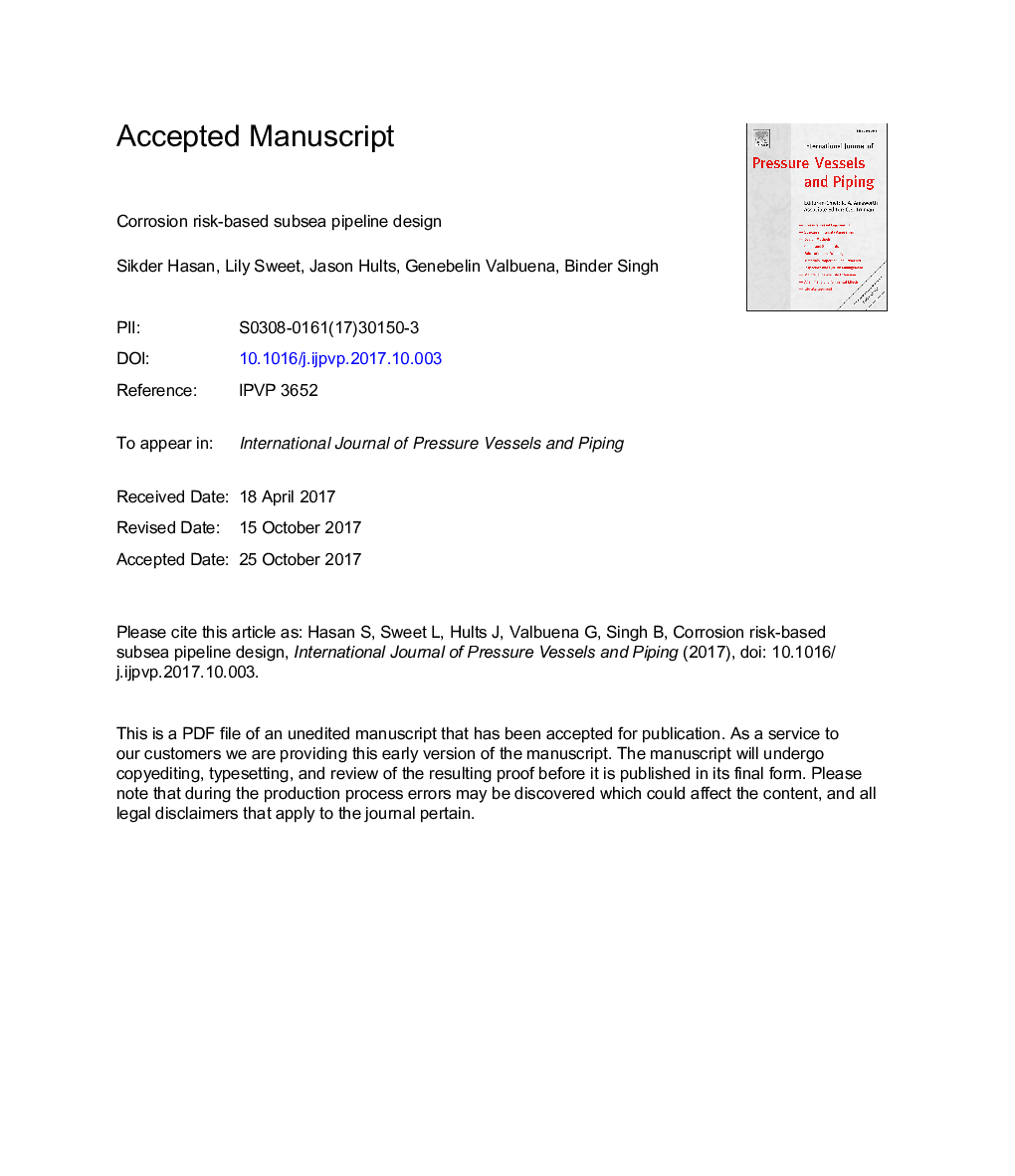| Article ID | Journal | Published Year | Pages | File Type |
|---|---|---|---|---|
| 7175079 | International Journal of Pressure Vessels and Piping | 2018 | 39 Pages |
Abstract
Subsea oil and gas pipelines are commonly designed with 3-6Â mm internal corrosion allowance added to pipeline wall thickness often without pragmatic thought. The corrosion allowance is neither calculated with due diligence to localized effect nor address the uncertainty of corrosion input variables. Since inspection and monitoring are difficult and expensive task for subsea pipeline, the design could be made more robust if potential metal loss defect caused by internal corrosion were properly quantified and consolidated in the design. This paper exactly did that by characterizing all sorts of uncertainty related to metal loss defect and incorporating them in the design. Based on calculated failure probability for metal loss defect, design variables are revisited to ensure recommended target safety level is meet/achieved. Hence, the risk-based design is also optimized since under or overconservative design is avoided. As internal corrosion defect is dominant mode of failure other corrosion related failure probabilities, which could be integrated using FTA, are not considered in this study. One representative failure incident's basic variables have been excavated from Monte Carlo simulation to develop finite element model to assess the mechanical integrity of the pipeline when it fails according to burst models. Recommendations are provided where appropriate.
Keywords
Related Topics
Physical Sciences and Engineering
Engineering
Mechanical Engineering
Authors
Sikder Hasan, Lily Sweet, Jason Hults, Genebelin Valbuena, Binder Singh,
